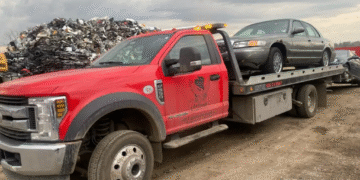Selling furniture, garden equipment, or car parts online looks straightforward until you actually need to get the stuff to customers. The delivery quote says one thing, but the final cost of getting items from your garage to their front door? That’s usually a very different number.
Most online sellers focus on the obvious costs – the courier quote, maybe some packaging materials. What catches people out are all those other expenses that sneak in after you’ve already committed to the sale. Failed deliveries, returns because items arrived damaged, hours spent on customer service calls with angry buyers. These hidden costs can turn what looked like a decent profit margin into barely breaking even, or worse.
Why Cheap Courier Quotes Can Cost You More
Getting a bargain delivery price feels like a win until you realise why it was so cheap. Budget courier services for large items often mean your sofa or washing machine gets handled by someone rushing through 40 deliveries that day with no particular care for whether it arrives in one piece.
The rock-bottom quote usually comes with conditions buried in the small print. No delivery to the room, just kerbside. No waiting if the customer’s running five minutes late. Extra charges for anything that takes more than 30 seconds to unload. By the time you’ve paid for all the bits they don’t include in the base price, that cheap option isn’t looking so economical anymore.
Then there’s the damage rate. Cheaper services often mean less experienced drivers, more rushing, fewer safety procedures. One broken item can cost you the entire profit from that sale plus a refund, plus your time dealing with the fallout, plus potential negative feedback that affects future sales.
The Real Costs Nobody Talks About
Failed deliveries are a massive hidden expense. Customer wasn’t home, driver couldn’t find the address, item wouldn’t fit through the door that the customer swore was “definitely big enough.” Each failed attempt means another delivery fee, more customer service time, and often an increasingly frustrated buyer who might just cancel the whole thing.
Returns eat into profits faster than almost anything else. Whether it’s damage in transit, wrong expectations, or genuine change of mind, you’re paying for delivery twice – once there, once back – plus your time dealing with the return, inspecting the item, potentially repairing it, relisting it. One return can wipe out the profit from three successful sales.
Customer service time costs money even if you’re doing it yourself. Hours on the phone to courier companies trying to track down where your customer’s sideboard ended up, dealing with complaints about delivery windows, explaining to buyers why the driver left their expensive item in the rain. That’s time you’re not spending sourcing new stock, listing items, or actually running your business.
The opportunity cost of slow or unreliable delivery affects your reputation. Negative feedback about delivery problems shows up in your ratings, makes future buyers hesitant, might even get you penalised by the platform you’re selling on. Building trust takes ages; one delivery disaster can undo months of good service.
The Marketplace Approach Actually Works
Using a marketplace collection and delivery service changes the economics quite a bit. Instead of one-size-fits-all pricing from traditional couriers, you get drivers bidding for your specific job. Competition tends to bring prices down while keeping quality reasonable since drivers know their ratings matter.
The transparency helps too. You know exactly what you’re paying before committing, no surprise surcharges when the driver arrives and decides your item is “oversized” even though you gave accurate measurements. Drivers quote for the whole job – collection, delivery, carrying it wherever it needs to go.
Communication is direct with the actual person doing the delivery, not filtered through a customer service centre reading from a script. If there’s an issue, you sort it out directly. If the customer needs to change the delivery time, you’re not going through three levels of bureaucracy to make it happen.
The driver’s incentive structure matters. Traditional courier drivers are often on tight schedules, paid per drop, penalised for running late. They’ve got no reason to care whether your item arrives safely or not – they’re onto the next delivery. Marketplace drivers bidding for individual jobs know their ratings and reviews directly affect future earnings, so they tend to take more care.
What This Actually Costs You
Let’s be realistic about numbers. Say you’re selling furniture regularly, maybe 10 to 15 items a month. Traditional courier approach with all the hidden costs might be costing you an extra £30 to £50 per item beyond the quoted price once you factor in failed deliveries, customer service time, and occasional damages.
That’s £300 to £750 a month in hidden costs. Over a year? £3,600 to £9,000. For a lot of small sellers, that’s the difference between a profitable business and a hobby that costs money.
Using marketplace platforms where drivers bid for jobs, your upfront costs are already 20 to 40% lower. Then add the reduction in failed deliveries, easier customer communication, and lower damage rates, and you’re suddenly keeping significantly more of your revenue.
The Practical Approach
Being realistic about delivery costs from the start saves a lot of grief. Build in buffer for potential problems rather than assuming everything will go smoothly. Price your items to account for the occasional failed delivery or return, because they will happen no matter how careful you are.
Get accurate measurements and weights. Nothing tanks your costs faster than a driver or courier turning up and finding the item is bigger than you said. Measure twice, list once.
Communicate clearly with buyers about delivery expectations. If there might be delays, if you need them available at specific times, whatever. Managing expectations prevents a lot of customer service headaches later.
Consider your time as a real cost. If you’re spending hours dealing with delivery problems, that’s money you’re not making elsewhere. Finding solutions that minimise your involvement pays off even if they cost slightly more upfront.
The Bottom Line
Large item delivery for online sellers isn’t just about getting the cheapest quote and hoping for the best. The hidden costs of traditional courier services, failed deliveries, returns, and customer service can destroy your margins even when everything looks good on paper.
Taking a more strategic approach to delivery logistics, whether that’s using courier marketplaces, being more selective about what you sell, or pricing properly to account for real costs, makes the difference between actually making money and just churning through sales for no profit.
The sellers doing well aren’t necessarily the ones with the lowest delivery prices. They’re the ones who’ve figured out how to minimise all those hidden costs that nobody talks about until they’ve lost money on enough sales to learn the hard way.









































